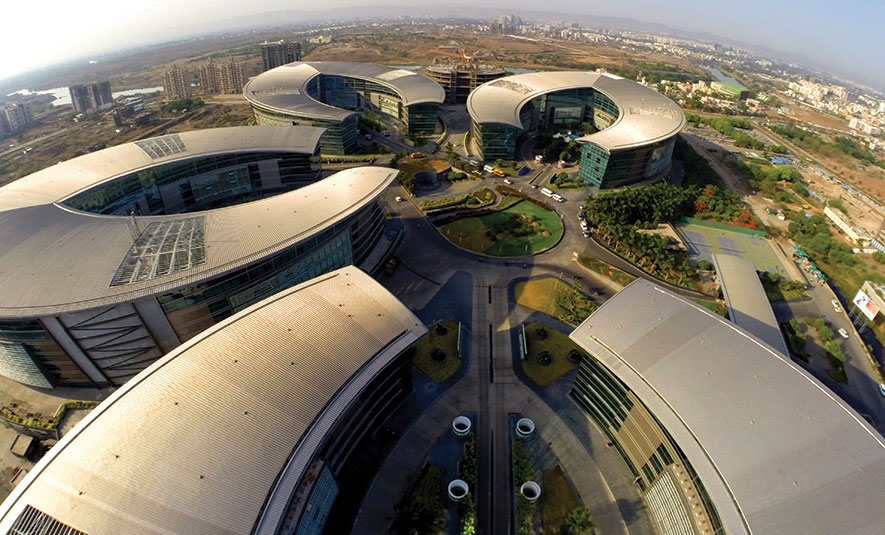
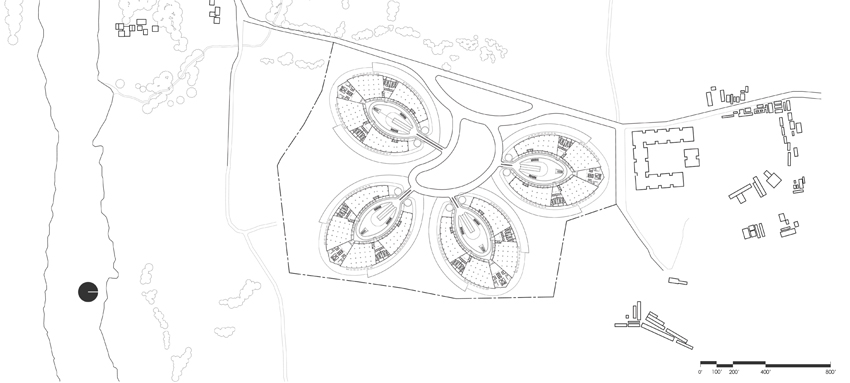
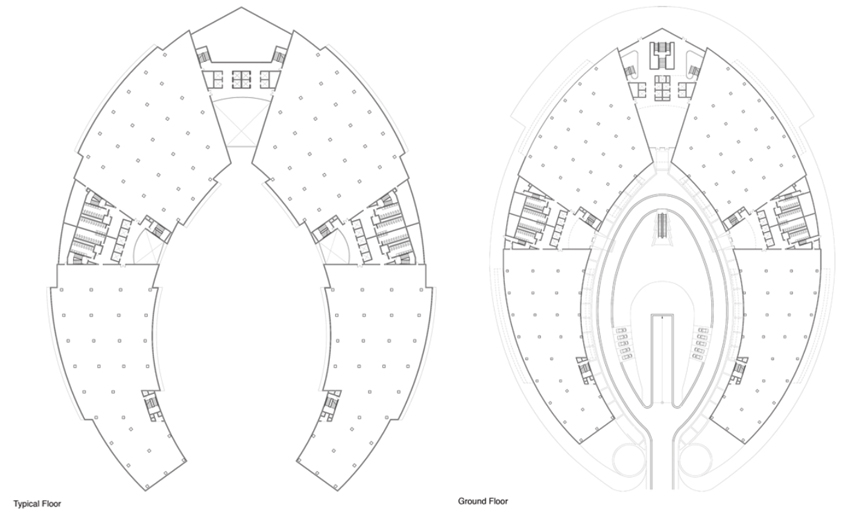
Designed by the architectural practice Form4 Architecture in 2014 and located in Pune-the seventh largest metropolis in India, 'The Falling Lotus Blossoms EON IT Park' is an elegantly arranged quartet of one-million- square-foot buildings that occupy a site located in the EON Free Zone, a Special Economic Zone established by the government to encourage development. This 21st-century contemporary workplace, which sets a grand scale in counterpoint to the rugged Indian countryside, overlooks a river and the fields beyond on a flat site that was previously almost entirely untouched.
At a Glance
Project: Falling Lotus
Blossoms: EON
Location: Pune, India
Type: IT Park
Architect: FORM 4 ARCHITECTURE
Partner: Niteen Parulekar, NPAPL
Client: Panchshil Realty
Status: Built
Total site area (sqm): 45 acres (182,000 sqm)
Building area: 400,000 sm
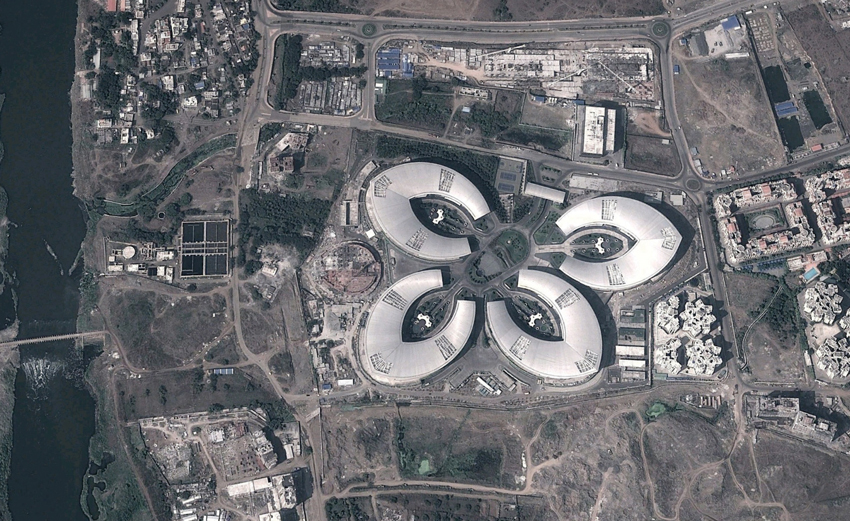
The complex has a geometric structure inspired from the white lotus which is the national flower of India. The cluster of four buildings each as a petal is arranged as a four-leaf clover with an open space in the center. Each building is a G+7 storey structure where every floor plate houses 4 independent office wings with 3 connecting cores and angular double glazed façade. The contours on site were utilized for sectional displacement of parking and other amenities and creating pleasant pockets of landscapes. The roof which is the most fascinating element derives its shape from the cross-section of the nautilus curving in all 3 planes making it the most challenging construction using the standing seam technology.
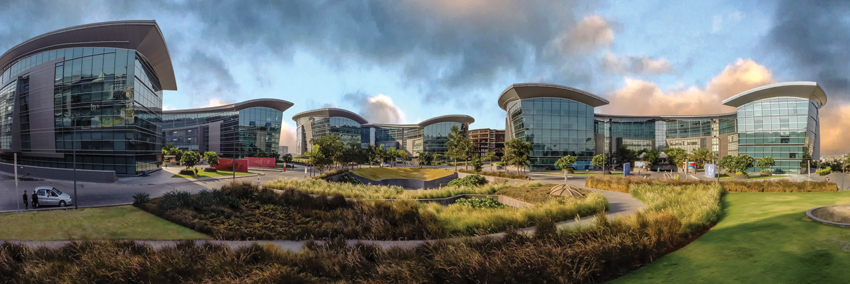
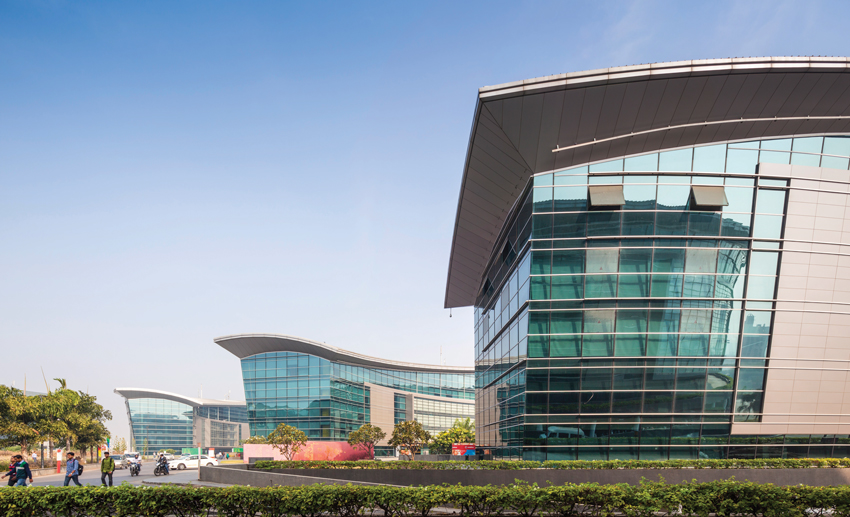
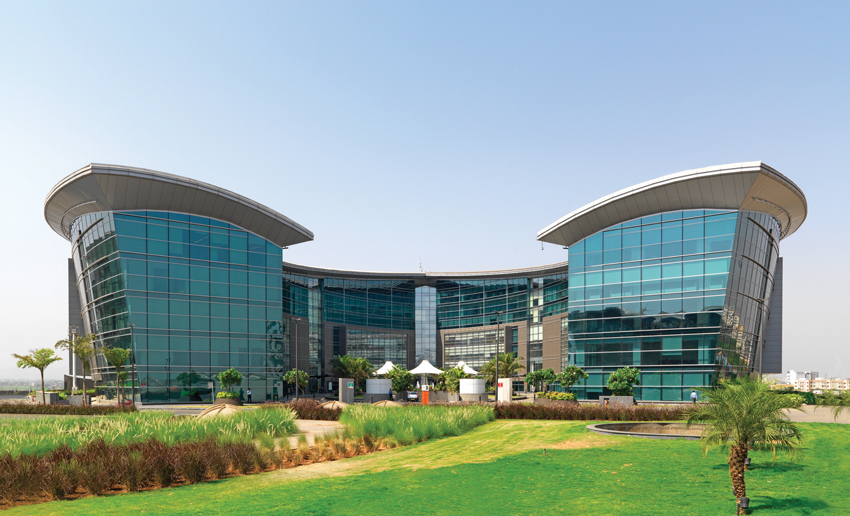
Raised on the ground plane, the complex picks up a teleological dimension in that it becomes a quasi-temple devoted to the future of technology and its own iconography. As the eye follows the sweeping shape of the roofline, a vivid image of the fluid plane emerges. The building opens up and embraces the users of a new society.
In response to the region's climate of extreme heat and humidity and the goal of populating the outdoor spaces for more than just a few months of the year, the buildings themselves contain semi-conditioned, shaded atrium spaces that serve as meeting or gathering spaces for the buildings' occupants. At dusk, each courtyard morphs into a giant kaleidoscope by the delineation of building elements with neon lighting.
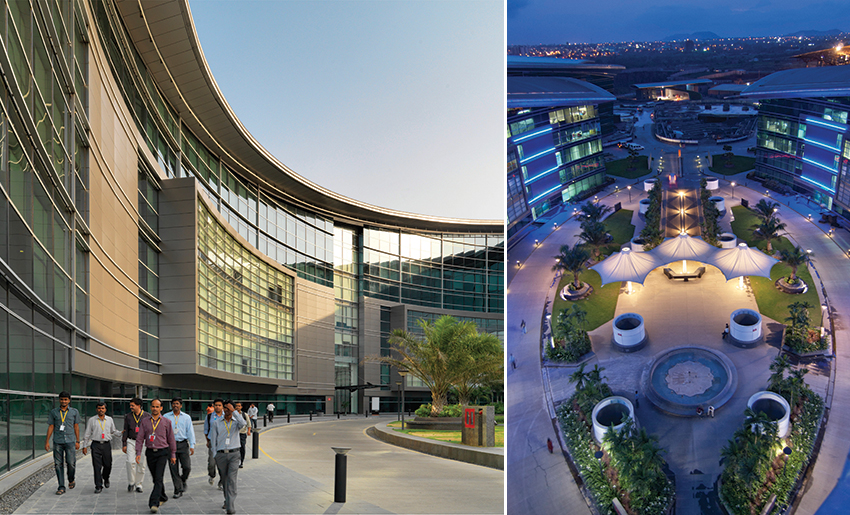
This iconic project 'The Falling Lotus Blossoms' both in its construction phase and completion, exemplifies technology as a transformative force for the language of architecture in a fast-growing country like India. It is through technology that architecture will acquire new identities as humankind ploughs through the never-ending project of life improvement.
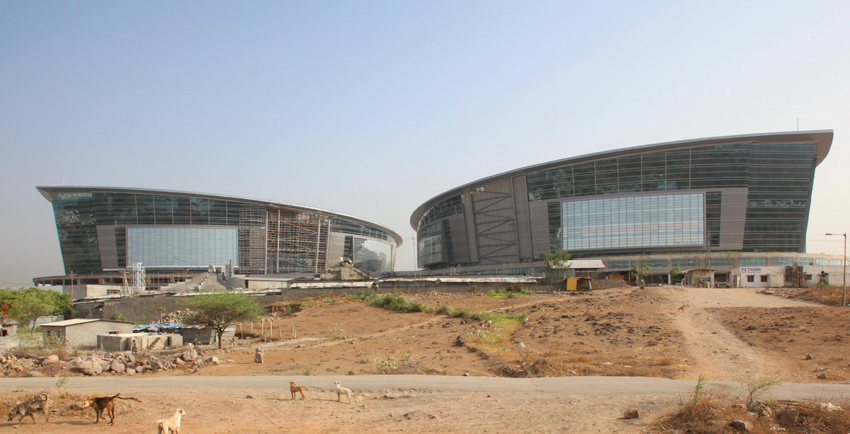
Green Features
The LEED Gold buildings are located on the government's first special economic development zone.100% Waste Water Treatment: An onsite sewage treatment plant (STP) treats 100% of the wastewater generated at site for reuse in landscaping.
68% Reduced Water Use: A 28,318,873-liter reduction of water use was realized through the use of gray water and water saving fixtures and sensors and the efficient use of water in landscaping, including rainwater harvesting and high efficiency irrigation systems.
20% Energy Saving: The 20.09% energy savings (against the ASHRAE basecase) is a result of optimized energy performance through the energy conservation measures (ECMs) that were incorporated into the project including: under deck insulation in the roof, efficient lighting design, occupancy sensors, wall insulation, VRV system in office areas, and double glazed high performance glass.
75% Regional Materials: 75.60% of the total project's materials, by cost, were manufactured within 800 kilometers of the project site. Among the materials sourced regionally are: bricks, cement, fire-proof doors, pozzocrete, steel, metal sheet roofing, glass, dry wall and false ceiling.
98% Diverted Waste: 98.18% of construction waste was diverted from landfills. Waste diverted from landfills include: reinforcement steel, cement bags, plastic, broken tiles, paint cans, cardboard, aluminum scrap, concrete cement and broken bricks.
100% Underground Parking: To assist in the reduction of a heat island effect, all 2,226 car parking spaces and 202 two-wheeler spaces are underground. Electric charging stations have been provided for 67 car parking spaces and 6 two-wheeler parking spaces.
100% Roof Coverage: The project used high SRI materials to cover 100% of the 13,350 square meters of roof area.















